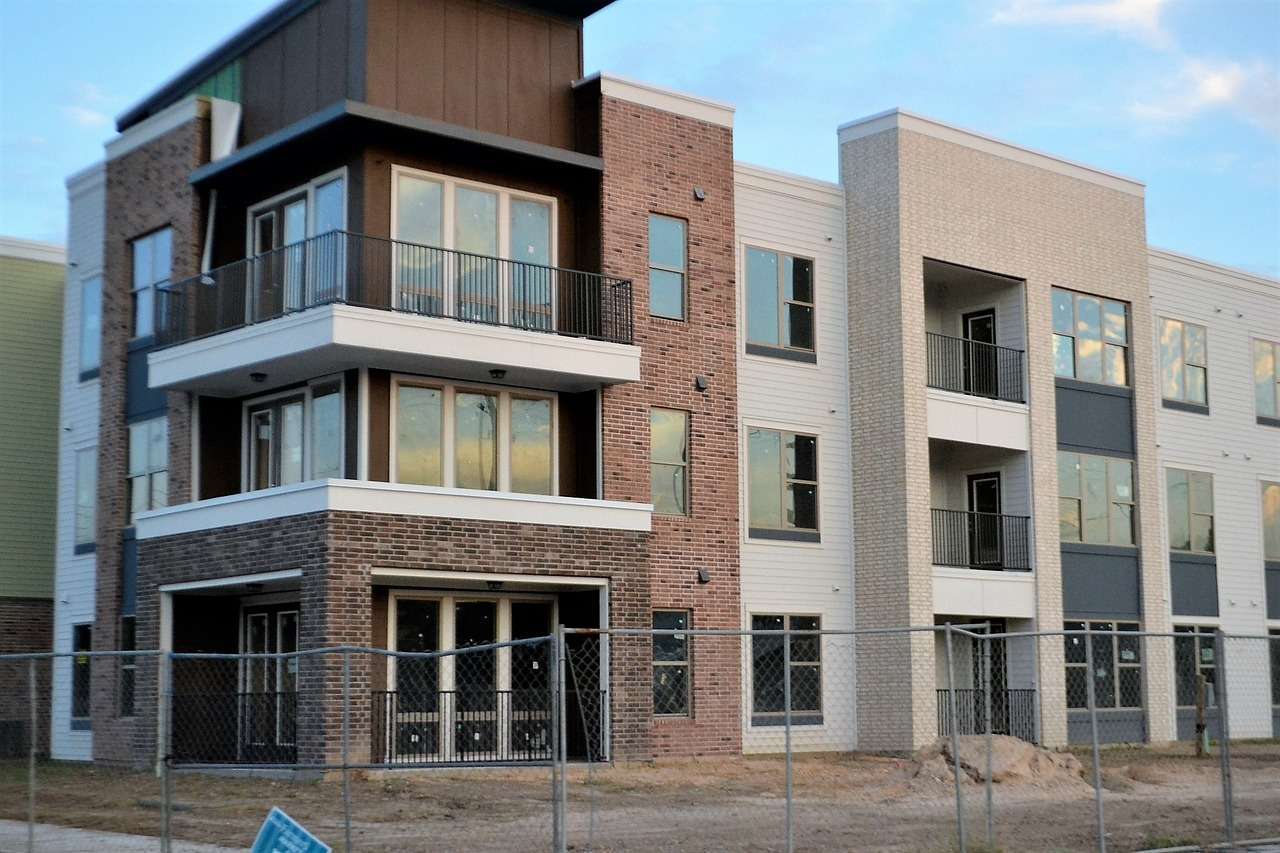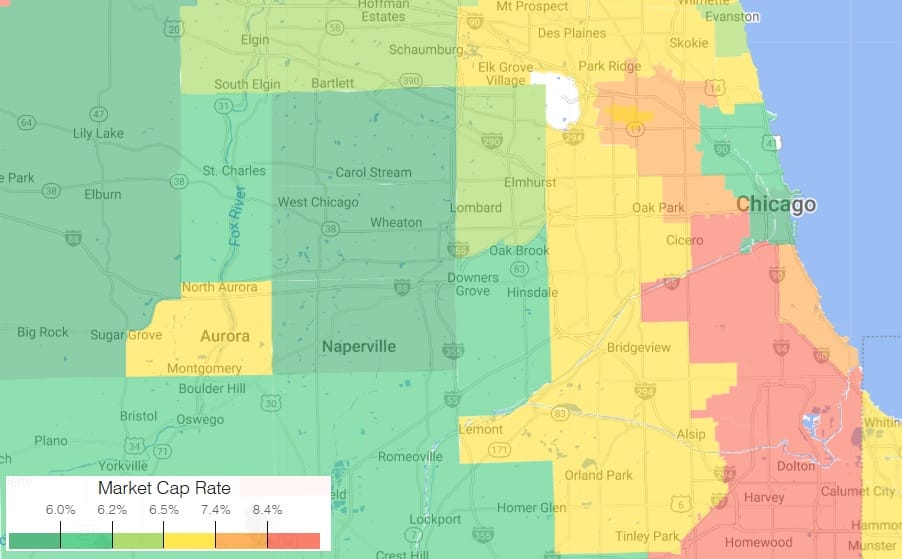Falling tax revenue. Aging downtowns losing their vitality. Record office vacancy. A housing crisis. One strategy could tackle all of these problems in one fell swoop: a wave of office-to-residential conversions.
Developers are interested, and the opportunities are there, with hundreds of millions of square feet of office identified throughout the country as potentially feasible for conversion. But the cost to do these projects is too often prohibitive, and completed projects have been limited.
Cities and states are starting to do something about it. Incentives aimed at encouraging office-to-residential conversions are gaining traction.
From Chicago, which will make at least $197M in tax increment financing dollars available to developers willing to convert old buildings to multifamily units, to a $400M program in California and a $2.5M tax abatement scheme in Washington, D.C., meant to achieve the same end, cities and states in the U.S. and beyond have introduced programs at the behest of developers who say the math doesn’t work without public funds.
“I don’t think you can get conversions done without incentives,” said Paul Dougherty, president and chief investment officer at PRP Real Estate Investment Management in Washington, D.C. “The numbers just don’t pencil right now.”
The pace of office conversions accelerated across the U.S. last year, according to CBRE, but the process has only taken a minuscule bite out of supply thus far. The 218 conversions completed across the U.S. from 2016 to 2021 combined with the 217 projects in the pipeline in 2022 amount to about 2% of the national office stock. And CBRE reported many of the pipeline projects would “fall prey to financing shortfalls or regulatory issues” and never see the light of day.
Industry groups like NAIOP are lobbying Congress to provide financial support for conversions on a national level as already costly projects become more prohibitive amid interest rate spikes and the evaporation of liquidity from capital markets.
In the meantime, a number of metros have taken matters into their own hands.
Pervasive commercial vacancies in Chicago’s Loop prompted Mayor Lori Lightfoot to roll out the city’s LaSalle Street Reimagined initiative, which offers developers TIF dollars and other incentives to repurpose the 5M SF of vacant commercial space in the office-heavy LaSalle Street corridor.
Washington, D.C., officials in February launched a program that abates 20 years of property taxes for owners who add at least 10 housing units and change a building’s use in a designated part of downtown. At least 15% of those units must be set aside as affordable.
On the West Coast, the state of California set aside $400M in incentives to convert office buildings to affordable housing. As of early March, more than 50 developers and investors had applied for the funding, according to CoStar.
Even smaller-population cities like Long Beach, California, the nation's 42nd-most-populous metro, have looked at tax incentives to convert office space into housing.
Conversion projects tend to kill two birds with one stone. For cities, the addition of residential units brings foot traffic downtown while also removing underperforming office stock from property tax rolls.
But despite the public sector’s best intentions, the amount of office stock fit for conversions remains low. A tool developed by Gensler measured the viability of conversions at more than 400 office buildings in 25 cities and found that only 3 in 10 were suitable candidates.
“The future of central business districts is not being central business districts but being more diverse in uses,” said Ian Zapata, Gensler design director and leader of repositioning and landlord services. “That doesn’t mean you’re not going to have office buildings there, but they need to be really great places to live. By being great places to live, that will actually make them great places to work.”
In general, buildings fit for conversions were constructed prior to the 1980s and have a depth of between 40 feet and 45 feet, Zapata said. But even more important to developers is whether the building’s finances allow a conversion to make good financial sense, he added.
“Typically the math does not work unless you’re acquiring the building below cost or there’s an incentive program,” Zapata said. “[The conversion] might work from a design perspective, but financially, there has to be an added ingredient.”
Conversions can cost anywhere from $250 per SF to $350 per SF, which Zapata said rivals the cost of a new build in some markets. In the past, developers have opted for conversions because they can be done more quickly or the demand for residential outweighs that for office.
Those factors are still at play, Zapata said, but the prevailing force for conversions today is the growing threat of obsolescence.
“What we’re seeing now, especially post-pandemic, is that there are buildings for which it doesn’t make sense to invest too much in office, but the math might work for them to be converted into residential,” he said.
The Cornerstone, an office building in Downtown Calgary, Alberta, is being converted to residential after receiving an incentive from the city.
In Downtown Calgary, Canadian province Alberta's largest city, Gensler’s tool was used to determine that at least 6M SF of vacant office space should be converted to residential. The city joined with its Real Estate Sector Advisory Committee to oversee the transformation, but it quickly became clear it would need to partner with the private sector on cost.
“Without some type of incentive, these projects wouldn’t get off the ground — they just wouldn’t pencil out for the developers,” said Sheryl McMullen, manager of investment and marketing for Downtown Strategy, a business unit within the city of Calgary. “We also wanted to make sure that they started to happen quicker and that we weren’t waiting until a building became 100% vacant.”
Most of Downtown Calgary’s office leases were tied up in oil and gas, McMullen said. As the sector’s office needs began to change, the vacancy issue grew more severe.
Today, the city’s downtown office vacancy rate is around 32%, and property values have declined by more than $16B, which McMullen said translates to roughly $400M Canadian ($297M) in lost tax revenue for the city.
“There was not a lot of vibrancy at all,” McMullen said of Calgary’s office-heavy downtown. “We’ve always had issues in terms of evening activity, and we had all these office towers that were sitting vacant.”
Calgary City Council in 2021 approved an initial $100M ($74M) for office-to-resi incentives. The program reimburses developers $75 ($56) per SF of converted space, with the hope of covering 30% of construction costs, though McMullen estimates cost escalation has pushed that share down to about 25%.
The incentive fund has since been replenished with another $62M ($46M), but city officials estimate they will need to allocate a total of $450M ($334M) to help developers remove all 6M SF. McMullen said her team is hoping provincial and federal government partners will help fill the gap.
“We can’t just wait for the private building owners to figure out how this is going to work in terms of their numbers — we want to incent to make sure it actually happens so we can get more residents into downtown,” she said, noting there are 11 projects either underway or starting soon that make up about a third of the vacant space targeted for conversions.
Construction continues at 1111 20th Street NW in Washington, D.C., pictured in December 2022, where Willco is converting a 1960s-era office to residential.
PRP’s Dougherty has completed two office-to-residential projects and is about to start on a third. Despite his experience in the space, he doubts conversions are the answer to reviving aging downtowns.
“Once you peel back the onion and you go through all the issues at these buildings, the juice isn’t worth the squeeze,” he said. “You go through so much to get these things done, and most apartment developers will say, ‘I’d rather build new.’ … It’s hard to make any money with these things.”
Where conversions make sense, incentives are critical, Dougherty said. To make the math work, projects should cost around $125 per SF, but many buildings are still trading for double that amount. This could change as distress spreads, but even if values fall, he said only certain properties will make good candidates.
“The fact remains that most buildings don’t work as conversions,” Dougherty said. “Office buildings weren’t built to be apartments.”









